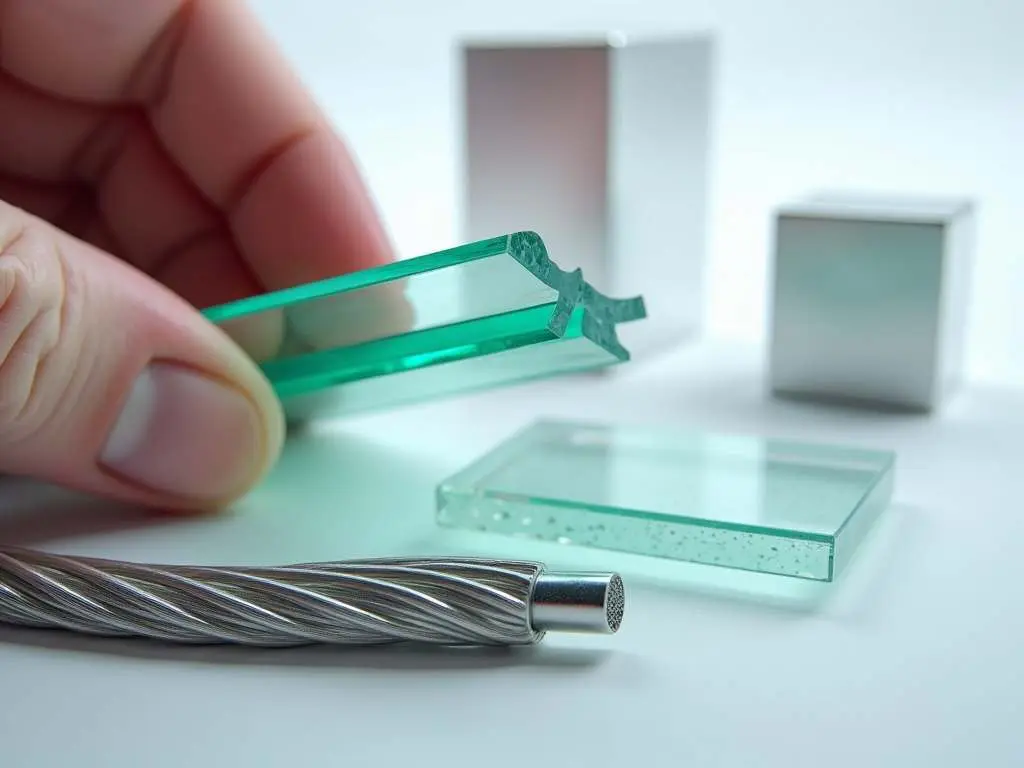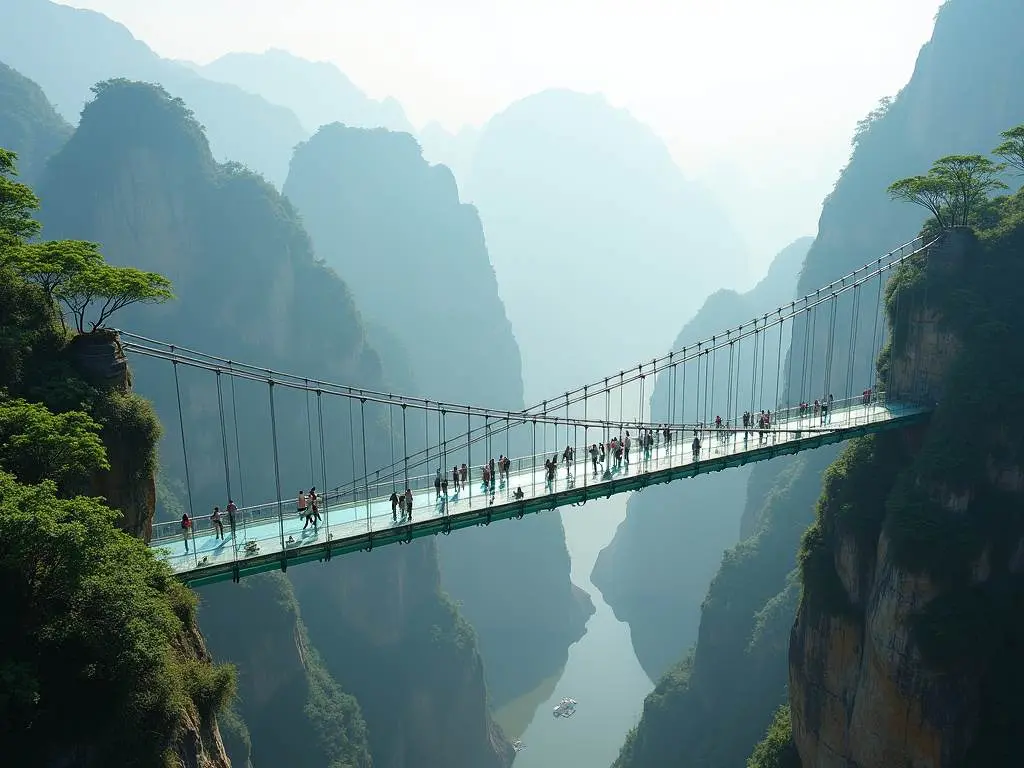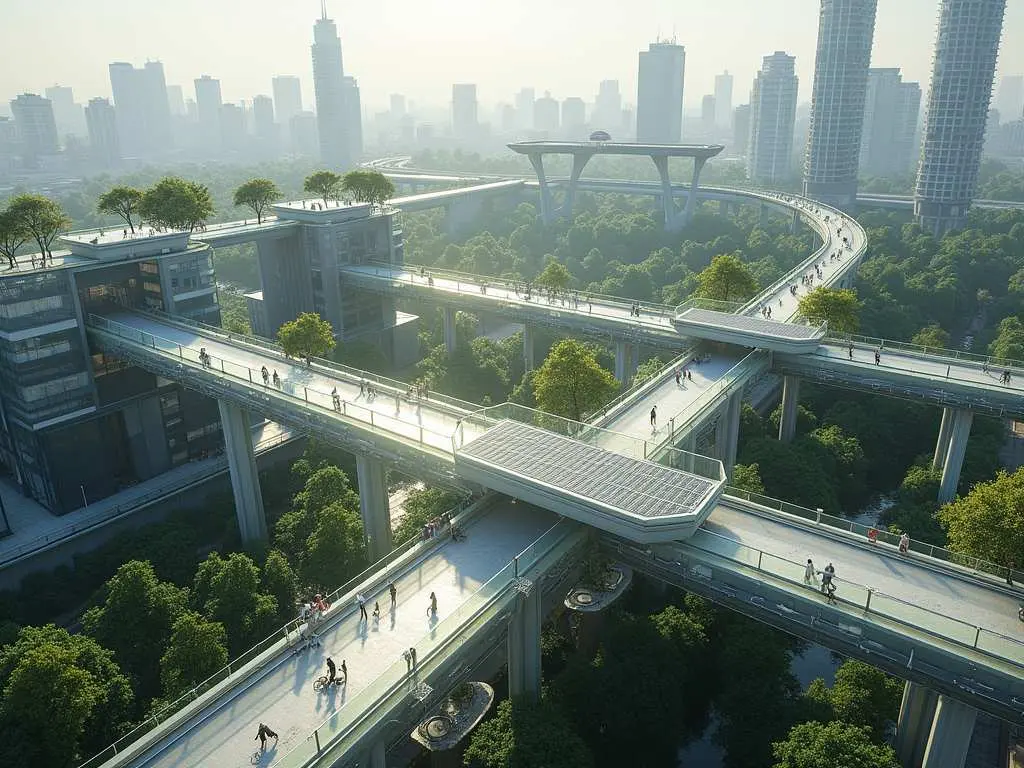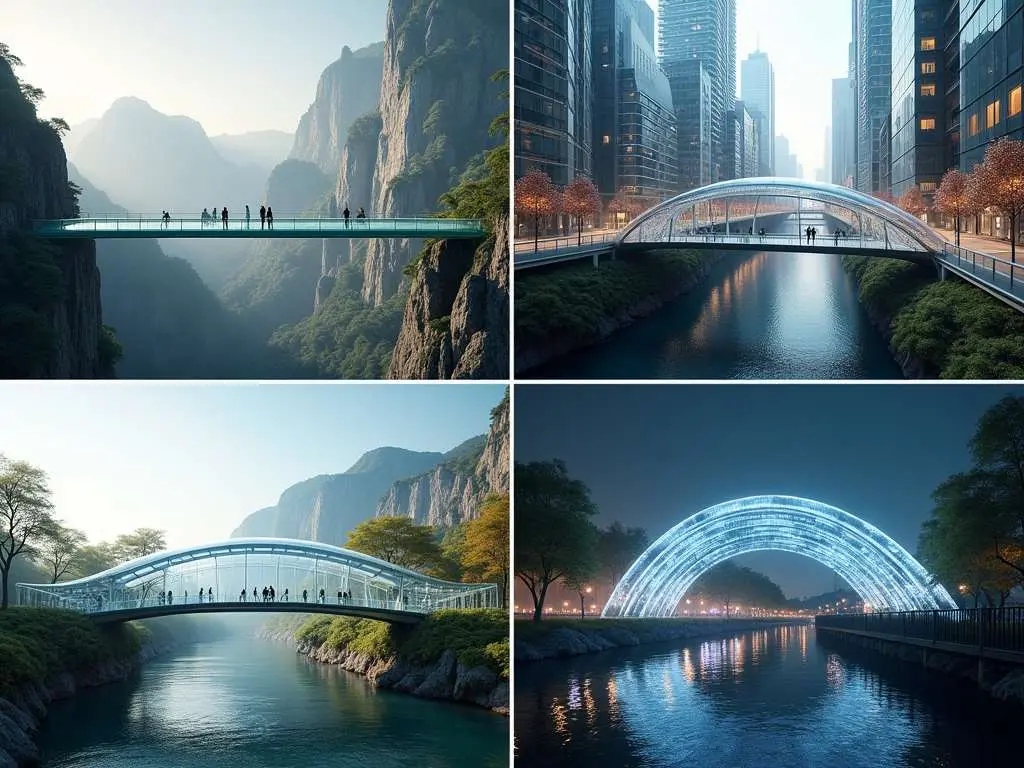As an architectural engineer specializing in cutting-edge structural design, I’ve been captivated by the growing trend of transparent bridges. These marvels of modern engineering not only push the boundaries of what’s possible in architecture but also challenge our perceptions of space and safety. In this article, we’ll explore the fascinating world of transparent bridge design, from the materials that make them possible to the breathtaking examples that are redefining our skylines.
Jump to:
The Rise of Transparent Bridges: A New Era in Architecture
Transparent bridges have emerged as a striking symbol of architectural innovation in recent years. These structures, often made of glass or other transparent materials, create the illusion of walking on air, offering unparalleled views and a unique sensory experience. But what’s driving this trend, and how are architects and engineers making these seemingly impossible structures a reality?
The appeal of transparent bridges lies in their ability to blend seamlessly with their surroundings while simultaneously standing out as architectural marvels. They challenge our perceptions of what a bridge should look like and how it should function, creating a sense of wonder and excitement for those who cross them.
The Psychology of Transparency
One of the most intriguing aspects of transparent bridges is their psychological impact on users. The sensation of walking on air can evoke a range of emotions, from exhilaration to fear. This emotional response is part of what makes these structures so compelling.
Question to ponder: How might the experience of crossing a transparent bridge differ for someone with a fear of heights versus someone who seeks out thrilling experiences?
Materials That Make It Possible

The development of advanced materials has been crucial in making transparent bridges a reality. Let’s explore some of the key materials used in these structures:
- Laminated Glass: This is the most common material used in transparent bridges. It consists of multiple layers of glass bonded together with a plastic interlayer, providing strength and safety.
- Polymer Composites: Some bridges use transparent polymer composites, which offer high strength-to-weight ratios and can be molded into various shapes.
- Stainless Steel Cables: While not transparent themselves, these cables are often used in conjunction with glass panels to create a minimalist, nearly invisible support structure.
- Transparent Aluminum: This futuristic material, also known as aluminum oxynitride, is still in the experimental stages but holds promise for future applications in transparent structures.
Material Strength Comparison
This chart provides a comparative view of the strength of different materials used in transparent bridge construction. While stainless steel remains the strongest, the advancements in glass and polymer technologies have made transparent structures increasingly feasible.
Safety Considerations: Engineering the Impossible
When it comes to transparent bridges, safety is paramount. Engineers must consider a range of factors to ensure these structures are not only visually stunning but also secure and durable.
Load-Bearing Capacity
One of the primary concerns in transparent bridge design is ensuring the structure can support its own weight plus the weight of pedestrians and any additional loads (such as wind or snow). This often involves complex calculations and stress testing.
Impact Resistance
Transparent materials must be able to withstand potential impacts without shattering. This is typically achieved through the use of laminated glass or polymer composites that are designed to crack rather than shatter upon impact.
Thermal Expansion
Temperature changes can cause materials to expand or contract, which can be particularly challenging for transparent bridges. Engineers must design structures that can accommodate these changes without compromising integrity.
Anti-Slip Measures
To prevent accidents, many transparent bridges incorporate anti-slip measures such as textured glass surfaces or non-slip coatings.
Regular Maintenance and Inspection
Transparent bridges require regular maintenance to ensure their structural integrity and clarity. This includes cleaning, inspecting for cracks or damage, and replacing panels as needed.
According to the American Society of Civil Engineers (ASCE), “The design of transparent bridges must adhere to the same rigorous safety standards as traditional bridges, with additional considerations for the unique properties of transparent materials”.
Stunning Examples of Transparent Bridges Worldwide

Let’s take a virtual tour of some of the most impressive transparent bridges around the globe:
1. Zhangjiajie Glass Bridge, China
Spanning the Zhangjiajie Grand Canyon, this 430-meter-long bridge holds the record for the world’s longest and highest glass-bottomed bridge. It can support up to 800 visitors at a time and offers breathtaking views of the surrounding landscape.
2. Glacier Skywalk, Canada
Located in Jasper National Park, this horseshoe-shaped glass walkway extends 35 meters from the cliff edge, providing visitors with a unique perspective of the Sunwapta Valley below.
3. Tower Bridge Glass Walkway, UK
London’s iconic Tower Bridge received a modern update with the addition of glass floors in its high-level walkways, allowing visitors to look down on the Thames and the bridge’s bascules in action.
4. Skydeck Chicago, USA
While not a bridge in the traditional sense, the Ledge at Skydeck Chicago features glass boxes that extend 4.3 feet from the 103rd floor of Willis Tower, offering a thrilling view of the city below.
The Future of Transparent Bridge Design
As technology continues to advance, we can expect to see even more innovative transparent bridge designs in the future. Some potential developments include:
- Smart Glass: Bridges that can change opacity based on weather conditions or time of day.
- Self-Cleaning Surfaces: Nanotechnology that keeps transparent surfaces clean and clear with minimal maintenance.
- Energy-Generating Bridges: Transparent solar cells integrated into bridge surfaces to generate electricity.
- Augmented Reality Integration: Overlaying digital information onto the transparent surfaces to enhance the visitor experience.
Creative exercise: Imagine you’re tasked with designing a transparent bridge for your hometown. What unique features would you incorporate to reflect the local culture and environment?
The Environmental Impact of Transparent Bridges
While transparent bridges offer stunning visual experiences, it’s important to consider their environmental impact. The production of materials like glass and polymers can be energy-intensive, and the structures themselves may pose risks to local wildlife.
However, some architects and engineers are working to address these concerns. For example, the use of bird-safe glass with ultraviolet patterns visible to birds but not humans can help prevent collisions. Additionally, incorporating green design principles, such as using recycled materials or integrating vegetation into the structure, can help mitigate environmental impacts.
The International Association of Bridge and Structural Engineering (IABSE) states, “Sustainable design practices are becoming increasingly important in transparent bridge construction, balancing aesthetic appeal with environmental responsibility“.
This video provides an in-depth look at the engineering principles behind transparent bridge design, offering valuable insights into the complexities of these structures.
The Economic Impact of Transparent Bridges
Transparent bridges often become major tourist attractions, bringing significant economic benefits to their locations. For example, the Zhangjiajie Glass Bridge attracted over 8 million visitors in its first year, generating substantial revenue for the local economy.
However, the construction and maintenance costs of these structures can be considerable. The initial investment in materials, engineering, and construction is typically higher than for traditional bridges. Additionally, ongoing maintenance to ensure safety and clarity can be costly.
Despite these challenges, many cities and regions see transparent bridges as worthwhile investments due to their potential to boost tourism and create iconic landmarks.
Accessibility and Inclusivity in Transparent Bridge Design
As we push the boundaries of bridge design, it’s crucial to consider accessibility and inclusivity. Transparent bridges should be designed to accommodate people of all abilities, including those with mobility impairments or visual disabilities.
Some considerations include:
- Ensuring smooth, level surfaces for wheelchair users
- Incorporating tactile elements for visually impaired visitors
- Providing alternative viewing options for those uncomfortable with heights
By prioritizing accessibility, we can ensure that the wonder of transparent bridges can be experienced by everyone.
The Role of Transparent Bridges in Urban Planning

Transparent bridges are increasingly being incorporated into urban planning strategies as a way to connect neighborhoods, create public spaces, and enhance city skylines. These structures can serve as more than just functional crossings; they can become destinations in themselves, encouraging pedestrian activity and social interaction.
Urban planners are also exploring the use of transparent bridges to create green corridors, incorporating plants and trees to improve air quality and biodiversity in cities. This fusion of nature and architecture creates unique spaces that can improve quality of life for urban residents.
People Also Ask
Q1: Are transparent bridges safe?
A: Yes, when properly designed and maintained, transparent bridges are safe. They undergo rigorous testing and are built to withstand significant loads and environmental factors. Regular inspections and maintenance ensure ongoing safety.
Q2: How are transparent bridges cleaned?
A: Cleaning methods vary depending on the materials used, but often include specialized equipment like high-pressure washers and robotic cleaning systems. Some bridges incorporate self-cleaning nanotechnology to reduce maintenance needs.
Q3: Can transparent bridges be used for vehicle traffic?
A: While most transparent bridges are designed for pedestrian use, some can accommodate light vehicle traffic. However, the cost and engineering challenges of creating vehicle-worthy transparent bridges often make them impractical for heavy traffic use.
Conclusion
Transparent bridges represent a fascinating intersection of art, engineering, and human experience. As we continue to push the boundaries of what’s possible in architecture, these structures stand as testament to our ingenuity and our desire to create spaces that inspire and amaze. The future of transparent bridge design is bright, promising even more innovative and sustainable structures that will challenge our perceptions and enrich our urban landscapes.
References
1 American Society of Civil Engineers. (2022). “Guidelines for Transparent Bridge Design.” ASCE Press.
2 International Association of Bridge and Structural Engineering. (2023). “Sustainable Practices in Transparent Bridge Construction.” IABSE Reports.
3 National Glass Association. (2021). “Advancements in Structural Glass for Architecture.” NGA Publications.
Disclosure
Our content is reader-supported. This means if you click on some of our links, then we may earn a commission. Commissions do not affect our editor’s opinions or evaluations. Learn more about our editorial process.

About the Editorial Staff
The Curvspace editorial team comprises a diverse group of experts on intermediate and threshold spaces in homes and workplaces. Architects and interior designers, civil engineers and artists, environmental and behavioral psychologists, sociologists and anthropologists. All collaborate to create helpful content, that explores the full potential of these often-overlooked areas to enhance our daily lives.


